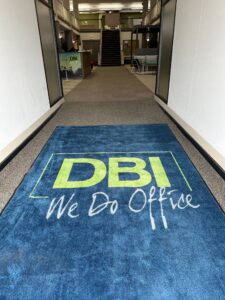Dennie Hilliard | March 23, 2021
On March 16, 2020, our world as we knew it changed. The state announced we should stay home and out of our offices for a couple of weeks to slow the spread of the Covid-19 virus. Those two weeks have now turned into a year and counting. The early pandemic working arrangement centered on control and often was plagued with mistrust of employees—initial management worries centered on doubts that remote employees were working. Fast forward, today there is enough research showing that remote employees tend to work longer hours and are more productive.
The predominant models that will shape post-COVID work arrangements will be one of these three arrangements: Remote-First, Hybrid-First, or Return to the Office.
Remote-First
Is typically a no headquarter office where all employees work remotely. In a Gartner study, 47% of employers will let employees remain remote full-time. The challenges in a remote-only model are that companies have to mold the organization to support a team-centric structure, a review of tech stacks across the organization for all departments, security practices, digital employee engagement, HR practices, like hiring and onboarding, for starters.
Hybrid-First
According to Gartner, 82% of employers will embrace a hybrid-first model. Their focus will be on creating a quality experience for office and remote workers. This model allows employees and employers to establish how much time they work remotely, and how much time they work in the office. Gartner states that “various work sites from remote-solo locations, to remote micro-sites with smaller populations, to traditional densely populated offices, factories, retail outlet, etc. This will affect real estate and leases in the future. This model too requires updating of company’s tech stack or solutions stack, to help boost productivity, and highlight employee engagement.
Return-to-the-Office
The standard work in the office model that we all knew a year ago, will have employees returning to the office full time. While this is a flexible discussion leadership will have to have among themselves, 26% of executives plan on bringing employees back to the office. This return to the office will involve executives listening to, and preparing employees who want some type of remote work arrangement. For some, it’s a disappointing return to the traditional work model.
The Move
Recent Gallup data shows 33% of Americans are now fully working from home. According to the research firm, this number is down from earlier in 2020. The suggestion here is more employees are returning to the office. Yet, returning to the office and resuming business as usual is presumptuous.
Pew research finds that 54% of workers who can work from home want to continue to do so. Blending what employees want and what the organization needs requires careful consideration. There is good news in-that leadership within companies is moving to a model meet employee’s expectations and work styles and align with meeting business goals.
As more of us get vaccinated and portions of employees return to the office, companies will need to create a return-to-work playbook. As you can see executives prefer the Hybrid-First work model. These models along with creating or updating your technology stack, should all be apart of the Hybrid return-to-work playbook.
As your office experts, DBI is here to help you navigate the new normal as you return to work. Preparing to reopen goes beyond restocking supplies – DBI is offering a free assessment of your space to ensure the safety of your office.


